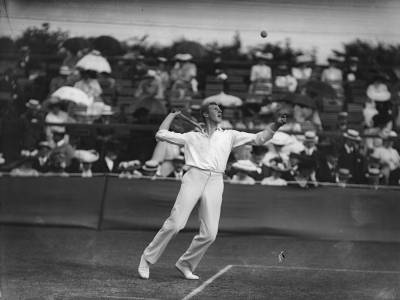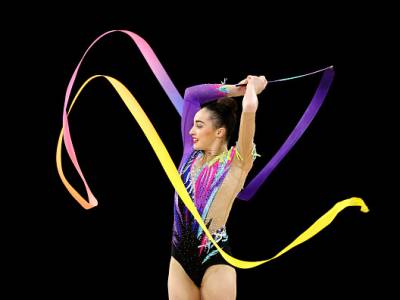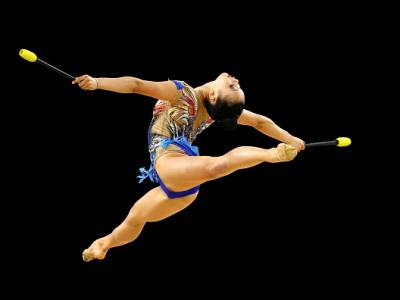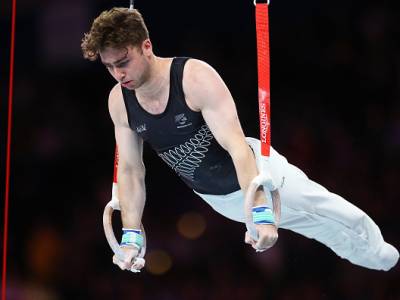Trampoline is part of the gymnastics family of sports, where gymnasts perform acrobatics while bouncing on a trampoline.
Qualifying - the Road to Rio
Qualification is based on the results of the 2015 World Championships, held in November in Denmark, and the 2016 Olympic Test Event in April at the Rio Olympic Arena.
Medalists from the 2015 World Championships qualified a place at Rio, and then the next five best-ranked men and women qualified a spot for their countries at the Games, with a maximum of two athletes per country (eight spots each for men and women in total).
New Zealand was just outside the required placings to earn a Rio spot via the World Championships, but earned a country spot at the Olympic Test Event. Young trampoline star, Dylan Schmidt, has been selected to attend the event.
From the Olympic Test Event, the top five men and women will qualify a spot for their countries, with a maximum of one athlete per country.
Brazil, as host country, is guaranteed a maximum of one competitor across both genders (one male OR one female gymnast). There is also a continental quota – there needs to be at least one athlete from each of the four continents.
"To be part of something amazing, like the Olympic Games, with such an amazing athlete, how can you not get excited! He is not only the most talented, he is also the most focused, most determined and most importantly, the hardest worker.”
"We have the opportunity not only to be part of history, but to create history. Trampoline has only been part of the Olympic program since 2000 and New Zealand has never had a trampoline gymnast at the Games. That's about to change." – Jarrod Heriot, Coach of Dylan Schmidt
“Don’t give up when it gets hard, either financially, socially or physically, because you will regret it – if you have the right attitude, you can make it.” – Dylan Schmidt, 2014 Youth Olympic Games Champion Trampoline Gymnast
Competition at Rio
When
Competition will take place on Friday 12 August and Saturday 13 August.
Where
All of the gymnastics competitions, including trampoline, will be held at the Rio Olympic Arena at Barra Olympic Park.
Between 14 and 16 men, and the same number of women, will compete at Rio in the men’s individual and women’s individual competitions. Both the men’s and women’s competitions have a qualifying round and a final round:
The qualification round: athletes perform a compulsory and an optional routine. The compulsory routine is pre-designed and must contain a set of skills in a certain order, while the optional routine can contain any 10 recognised skills. The eight athletes with the best scores advance to the final round.
The Final: the top eight gymnasts from the preliminary rounds perform one more voluntary routine in the final, competing in ascending order depending on their two-routine score. The leading qualifier has the doubtful honour of jumping last, but any of the eight finalists can become Olympic Champion with the medals based on their final routine.
Demystifying the Event
Trampoline routines are performed on web or string beds (trampolines) that can propel the gymnast up to 10m in the air.
After the judge gives the signal, the gymnast must start their performance within 1 minute, during which they are allowed to jump on the trampoline until they reach the required height and stability for their routine. They then start the first of 10 skills in a routine.
Two voluntary routines are performed. The first voluntary routine has only two skills that receive points for difficulty, and the other eight are judged on execution only. The time of flight of each routine is also calculated. The second voluntary routine is made up of single, double or triple somersaults with multiple twists.
A successful routine will show consistency of height, proper technique and a minimum deviation from the centre of the bed. The routine must end under control in an upright position.
The most popular Olympic trampoline routines include three basic positions: tucked, piked and straight. But there’s plenty of variety in between, including the barani (a front somersault with a half-twist), the cody (a backward somersault from the front) and the triffis (a triple-front somersault with a half-twist).
Scoring
Nine judges watch the routines and award scores for height, technique, execution, continuous rhythm and body control. Everything from the angle of the limbs to the position of the feet must be as close to perfect as possible.
Total score: scores for execution, difficulty and time of flight are added together to produce the overall score for the routine.
Execution: five judges assess the gymnast's ‘form’, eg, whether the legs are together, the body line is straight, shapes are clearly defined and placement is near the centre of the bed. The execution scores from the five judges are calculated by eliminating the highest and the lowest before adding together the middle three.
Difficulty: two judges work out the ‘degree of difficulty’ (DD or tariff) of the routines. Each skill has a prescribed rating according to the code of points. For example, a single somersault in the tucked position earns 0.5 points, while a triple somersault tucked with a half-twist is valued at 1.7 points. Each routine is recorded on video to confirm the DD score.
Time of flight: this is measured electronically and produces a record of the actual time spent in the air, excluding any time spent in contact with the trampoline bed.
Penalties
Penalties are given for major errors, such as touching the trampoline’s frame pads at the end of the routine.
The Stars of Trampolining
The Best in the World
For men, the Olympic Champions have been Aleksander Moskalenko (Russia), Yuri Nikitin (Ukrain), Lu Chunlong (China) and Dong Dong (China). The Chinese men have been dominating the sport for the past two Olympic cycles and we can expect them to be on the podium again in 2016.
For women, the Olympic Champions have been Irina Karavaeva (Russia), Anna Dogonadze-Lilkendey (Germany), He Wenna (China) and Rosie MacLennan (Canada). The Chinese women won silver and bronze medals at the 2012 Olympic Games so we can expect them to be pushing again for the podium.
Dylan Schmidt from New Zealand is one to watch. His track record as World Age Group Champion, Pacific Rim Champion and 2014 Youth Olympic Games Champion holds him in good stead to be competitive, should he be selected to compete at the Rio Games.
Did you know …
Athletes can perform in socks or shoes especially designed for trampoline, but are not allowed to compete in bare feet.
China has won a third of the entire men's and women's Olympic trampoline medals awarded to date, with three golds, one silver and four bronzes.
Contrary to popular belief, it is not the person who bounces the highest who gets to win trampoline competitions!
The trampolines that the athletes at the Olympic Games compete on are very different from the average backyard trampoline. They are approximately 5x3m and much, much more bouncy.
Trampoline is a form of gymnastics that artistic gymnasts can move on to if they want to continue as a competitive gymnast.
The average age of an Olympic trampolinist is mid-20s.
Trampoline has four disciplines at the World Championships – individual trampoline (the Olympic discipline), synchronised trampoline, double mini-trampoline and power tumbling.
The New Zealand trampoline community has less than 300 nationally competitive members and there are 27 trampoline clubs across the country.
A hall being used for trampoline must have a minimum height of 8m.
Trampoline Terminology
Randolph - A front somersault with 2.5 twists, also known as a ‘Randy’.
Rudolph - A front somersault with 1.5 twists, also known as a ‘Rudy’.
Optionals - Manoeuvres selected by the gymnast which portray their best skills, often with a high degree of difficulty.
Barani - A front somersault with a half-twist.
Cody - A backward somersault from the front.
Triffis - A triple front somersault with a half-twist.
Timeline
1930s - George Nissen, an American diver and gymnast, constructed the first folding trampoline in his garage in Iowa, USA. The inspiration for the trampoline was the large catch net that circus trapeze artists would fall into at the end of a performance, and George’s desire to spend more time in the air and less time towelling off and climbing the tower as a diver.
1950s - The 10-bounce routine became the norm.
1964 - The first World Championships were held in London.
2000 - Trampoline made its first appearance at the Olympic Games in Sydney, with both men’s and women’s competitions, and has been included in every Games since.
Tweet Share
Gymnastics - Trampoline Games History
-
Olympic Summer Games Tokyo 2020
1 -
Olympic Summer Youth Games Buenos Aires 2018
-
Olympic Summer Games Rio 2016
-
Olympic Summer Youth Games Nanjing 2014
1 -
Australian Youth Olympic Festival Sydney 2013
1 1 1 -
Olympic Summer Games London 2012
-
Olympic Summer Youth Games Singapore 2010
-
Australian Youth Olympic Festival Australian Youth Olympic Festival 2009
-
Australian Youth Olympic Festival Sydney Youth Festival 2007
-
Australian Youth Olympic Festival Sydney Youth Games 2005
1












